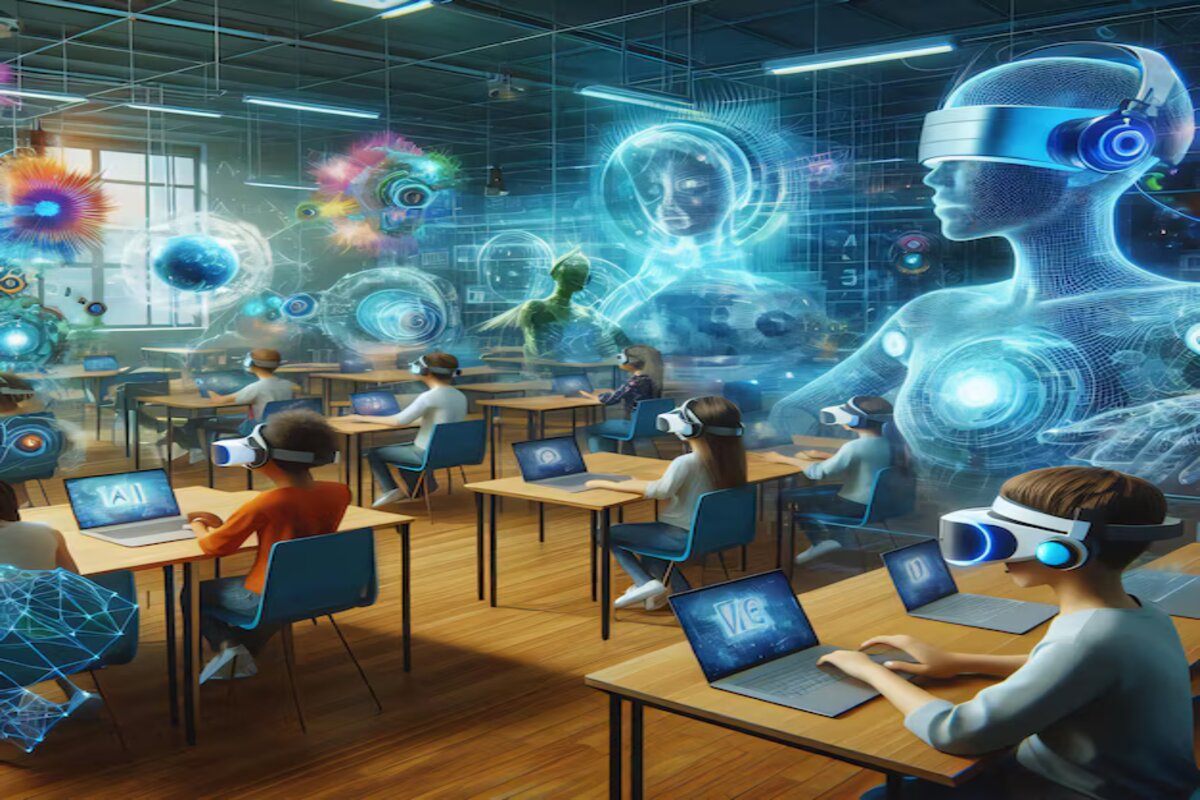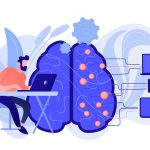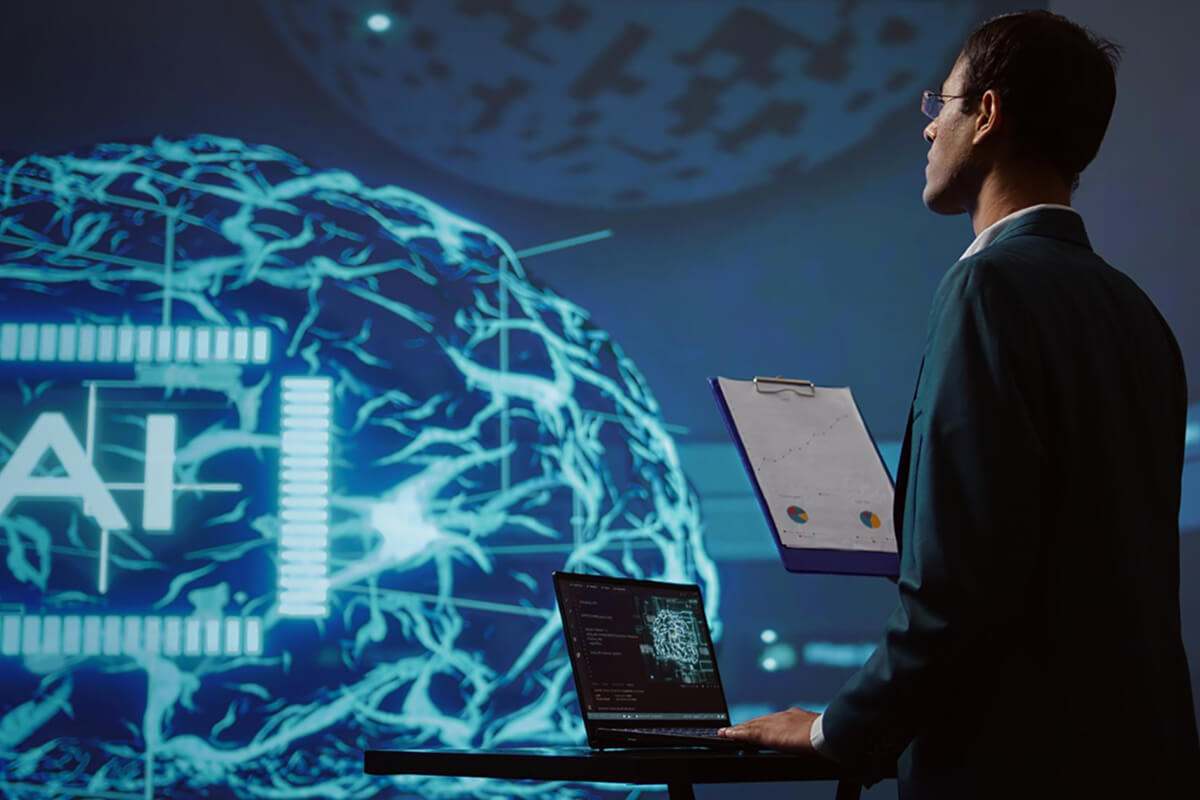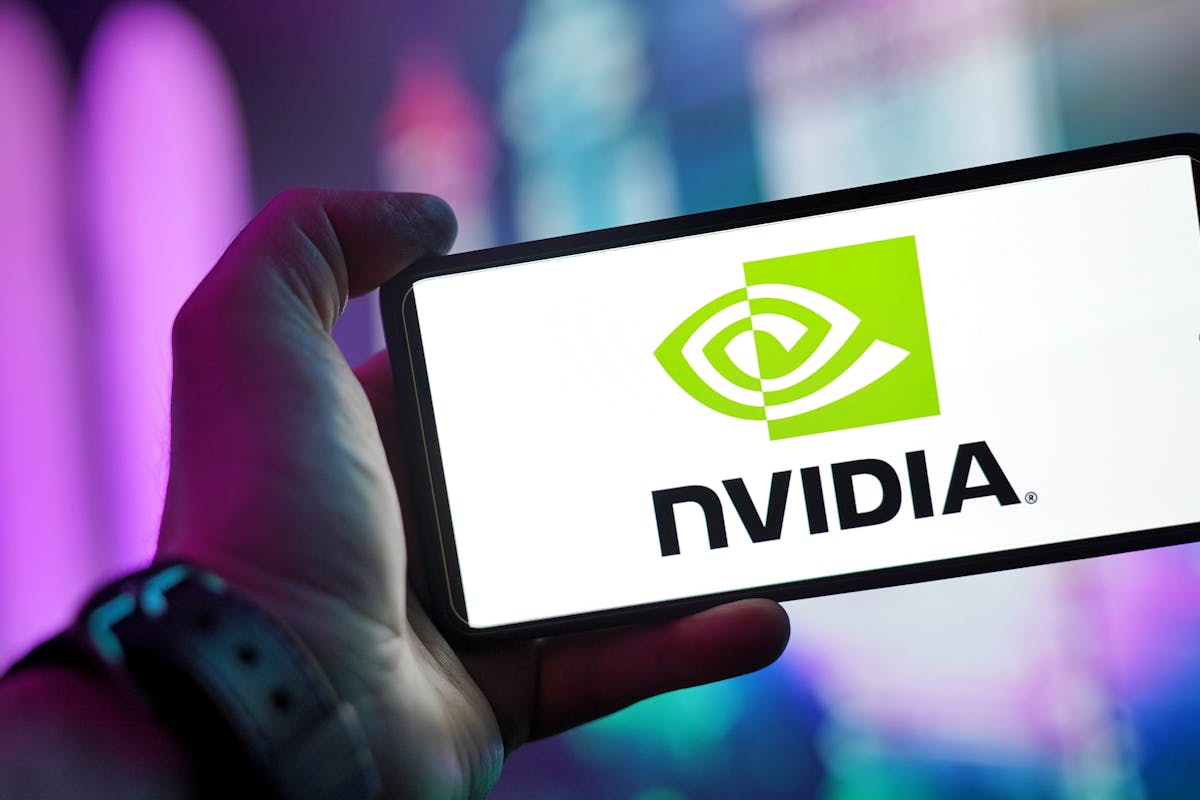AI in Education: Personalized Learning and Intelligent Tutoring Systems
Artificial Intelligence (AI) is transforming nearly every sector of society, and education is no exception. The impact of AI on education is becoming increasingly apparent, particularly through personalized learning and intelligent tutoring systems (ITS). These technological advancements are designed to provide students with a more tailored, engaging, and efficient learning experience. By addressing the diverse needs of individual learners, AI is opening new doors for innovation in teaching methodologies and classroom management. As these technologies evolve, they promise to not only support educators but also empower students to take control of their own learning journey.
In this extended blog post, we will explore how AI is revolutionizing education through personalized learning and ITS, the various benefits these technologies offer, the challenges they present, and what the future holds for AI-driven educational solutions.
Understanding Personalized Learning: A Deep Dive
Personalized learning refers to an educational approach in which the content, pace, and style of learning are tailored to the individual needs, strengths, and preferences of each student. Traditional classroom settings often adopt a one-size-fits-all approach, which can leave some students struggling to keep up while others may become disengaged due to lack of challenge. Personalized learning seeks to overcome these limitations by delivering a more customized educational experience.
AI plays a pivotal role in making personalized learning a reality. Through advanced algorithms, machine learning models, and data analytics, AI can monitor a student’s progress and adjust the learning environment in real time. This adaptability ensures that each student is presented with materials and tasks that match their current skill level, learning pace, and preferred style of learning.
How AI Enhances Personalized Learning:
- Continuous Assessment and Adaptation: AI can constantly assess a student’s progress, identifying strengths and weaknesses as they learn. By using this data, AI systems can automatically adjust the difficulty level of lessons and materials to ensure students are always engaged and neither overwhelmed nor under-challenged.
- Custom Learning Paths: Traditional education often follows a rigid curriculum. AI, however, allows for a more fluid learning path. Based on a student’s interactions with the material, the system can recommend supplementary resources such as videos, tutorials, or exercises that cater to specific gaps in understanding. This ensures a tailored learning experience for each student.
- Adaptive Pacing: Every student learns at their own pace. AI-driven personalized learning platforms can offer students the freedom to progress as they see fit, helping them grasp concepts more thoroughly before moving on to more complex material. This is a significant departure from traditional models that often push students through a fixed curriculum at the same speed.
What are Intelligent Tutoring Systems (ITS)?
Intelligent Tutoring Systems (ITS) are advanced educational platforms that use AI to simulate the experience of one-on-one tutoring. Unlike traditional classroom settings where a teacher’s attention is divided among many students, ITS offers individualized instruction and guidance. These systems are designed to mimic the benefits of personalized tutoring by providing real-time feedback, customized exercises, and step-by-step assistance tailored to each learner’s needs.
While human tutors are still valuable, ITS can provide supplemental support to students at scale. Whether a student is struggling with a particular subject or simply seeking enrichment, ITS can serve as an always-available resource that adjusts to the learner’s proficiency and needs.
Key Features of Intelligent Tutoring Systems:
- Real-time Monitoring and Feedback: ITS closely monitors a student’s actions and provides instant feedback when errors occur. This allows students to immediately correct mistakes and understand the concepts they’re struggling with, thereby reinforcing learning in real time.
- Dynamic Interaction: ITS systems engage students in interactive learning. They often use a combination of visual aids, simulations, and gamification elements to keep learners engaged. This interactive experience makes it easier for students to grasp abstract or difficult concepts through hands-on practice.
- Step-by-Step Problem Solving: ITS can guide students through complex problem-solving processes by breaking problems into smaller, more manageable steps. This feature mirrors what a human tutor might do by leading a student through the solution while explaining each step along the way. Additionally, the system adjusts its guidance based on how well the student is doing.
AI’s Role in Enhancing Personalized Learning and ITS
AI has revolutionized both personalized learning and ITS by making it easier to deliver customized educational experiences at scale. One of AI’s greatest contributions to education is its ability to process and analyze vast amounts of data. By leveraging this data, AI systems can gain insights into each student’s unique learning patterns and adjust accordingly.
How AI Drives Innovation in Education:
- Learning Analytics: AI systems use data analytics to track a student’s performance over time. Metrics such as the time spent on a task, the number of attempts needed to solve a problem, or the types of mistakes made provide valuable insights. By analyzing this data, AI can predict where a student might struggle next and proactively offer support or adjust learning activities.
- Automated Feedback and Assessment: One of the challenges in traditional education is the delay between when a student completes an assignment and when they receive feedback. AI-powered systems can instantly assess student work and provide immediate feedback, allowing for timely corrections and a faster learning cycle.
- Scalability: AI makes it possible to provide personalized learning to thousands of students simultaneously. In large classrooms or even virtual learning environments with students from all over the world, AI can offer individualized attention and instruction without overwhelming teachers or tutors.
- Enhanced Student Engagement: AI-driven tools like ITS often incorporate gamified elements, which help make learning more interactive and enjoyable. By turning learning into a game-like experience with rewards, progress tracking, and challenges, students are more motivated to engage with the material.
The Benefits of AI-Driven Personalized Learning and ITS
The integration of AI in education has the potential to offer numerous advantages to both students and educators. Personalized learning and ITS have already begun to reshape how students interact with educational content, offering a more engaging and effective learning experience.
Key Benefits:
- Enhanced Student Engagement and Motivation: One of the key advantages of personalized learning and ITS is the ability to keep students engaged. By offering content that aligns with their interests and learning styles, students are more likely to stay motivated and actively participate in their learning journey.
- Self-Paced Learning: With AI-driven systems, students can progress through material at their own pace, which is a major benefit for both high achievers who may want to move quickly and struggling students who need more time to understand certain concepts. This flexibility leads to deeper learning and improved retention.
- Increased Access to Quality Education: AI-powered ITS and personalized learning platforms can reach students in remote or underserved areas, providing access to high-quality educational resources. This can help bridge the educational divide that exists between students of different socioeconomic backgrounds.
- Supporting Teachers: AI doesn’t replace teachers; instead, it acts as a powerful tool to support them. Teachers can leverage AI to offload repetitive tasks, such as grading and tracking student progress, freeing up more time for individualized instruction and mentoring. Additionally, the insights provided by AI can help teachers identify which students need extra attention.
Challenges and Ethical Considerations in AI-Driven Education
While the benefits of AI-driven personalized learning and ITS are immense, these technologies are not without their challenges. As AI continues to be integrated into the educational landscape, several important considerations must be taken into account to ensure its responsible use.
Key Challenges:
- Data Privacy and Security: AI systems rely heavily on student data to function effectively. Ensuring that this data is securely stored and handled is crucial to protecting students’ privacy. There are concerns that sensitive data, if mishandled, could be exploited or misused, particularly when shared with third parties.
- The Digital Divide: While AI-driven tools have the potential to democratize education, access to these tools is not universal. Students from lower-income households or rural areas may lack access to the necessary technology or internet infrastructure, creating a widening gap between those who can and cannot benefit from AI-driven education.
- Over-reliance on Technology: The increased use of AI in education may lead to over-reliance on technology. While AI can offer personalized learning experiences, it cannot replace the human elements of teaching, such as fostering creativity, emotional intelligence, and critical thinking. Balance is essential to ensure that technology complements rather than dominates the educational process.
- Ethical Issues: As AI becomes more involved in student assessment and decision-making, ethical questions arise regarding the role of AI in grading, admissions, and evaluating student potential. AI systems must be designed to be fair, transparent, and unbiased to ensure that they do not perpetuate existing inequalities or introduce new forms of discrimination.
Looking Ahead: The Future of AI in Education
As AI technologies continue to evolve, we can expect further innovation in the realm of personalized learning and ITS. Future advancements could bring even more intuitive, responsive systems that feel more human in their interaction. AI will likely become more deeply integrated into every aspect of education, from content creation to curriculum design, assessment, and beyond.
In the long term, AI could transform traditional educational models by offering students an even more immersive and interactive learning experience. Virtual reality (VR) and augmented reality (AR) may also play a role, combining with AI to create dynamic learning environments that adapt to individual preferences and needs.
Conclusion
AI-driven personalized learning and intelligent tutoring systems represent a significant leap forward in the world of education. They have the potential to revolutionize how students learn, offering more engaging, customized, and efficient learning experiences. While there are challenges to overcome, including data privacy concerns and ensuring equitable access, the future of AI in education is undeniably bright. With careful consideration of ethical implications and continued technological development, AI can be leveraged to create a more inclusive, flexible, and effective educational system for learners everywhere.
The road ahead is promising, and as AI becomes more integrated into education, the potential to revolutionize traditional learning models becomes increasingly evident. Both educators and students stand to benefit from the continued development and adoption of AI-powered tools like personalized learning platforms and intelligent tutoring systems. These systems not only adapt to the individual needs of students but also provide teachers with valuable insights, enabling them to better support each learner.








